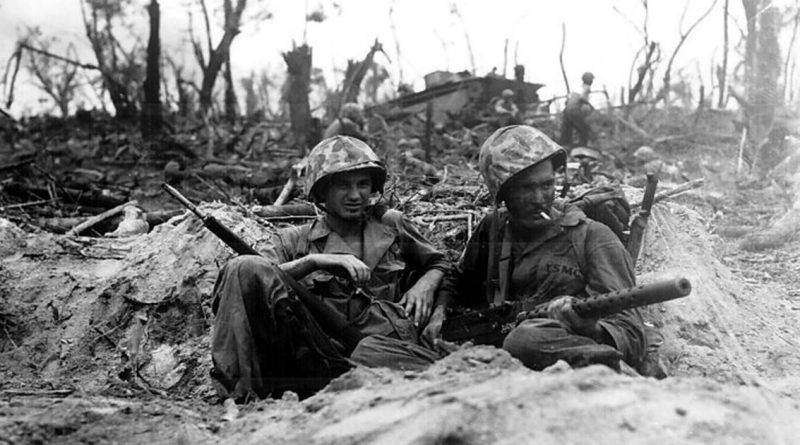September 15 in U.S. military history
1776: Connecticut militia forces guarding New York City break into a panicked retreat following an hour of naval bombardment “so terrible and so incessant a roar of guns few even in the army and navy had ever heard before,” enabling Adm. Lord Howe’s fleet to land several thousand troops in New York City unopposed. Gen. George Washington and his army are nearly trapped, but manage to squeeze past the King’s men and set up camp at Harlem Heights to the north. New York City will remain in British hands until the end of the war.
1862: Surrounded, out-gunned, and out-numbered, Col. Dixon S. Miles’ 12,0000-man Union force surrenders to Maj. Gen. Thomas “Stonewall” Jackson following three days of fighting at Harper’s Ferry, Va. (present-day West Virginia).
1944: (featured image) After five battleships hammer the small coral island of Peleliu with thousands of 14- and 16-inch rounds, and planes from 19 aircraft carriers drop over 1 million pounds of bombs, Rear Adm. Jesse Oldendorf believes he has run out of targets. However, the entrenched Japanese 14th Infantry Division is relatively unharmed and ready for the 1st Marine Division when they land. At 0832, Col. Lewis B. “Chesty” Puller and tens of thousands of Marines storm ashore, facing fierce resistance by the Japanese.
The 1st Marine Division will suffer 6,5000 casualties at Peleliu – a full one-third of its troops – before being relieved after a month of some of the bloodiest combat in Marine history. It will takes the Americans 73 days to capture the island.
1950: Six years to the day after landing at Peleliu, Chesty Puller and his 1st Marine Regiment are among 40,000 troops to hit the beaches at Inchon, where the UN invasion catches the North Koreans by surprise. Gen. Douglas MacArthur’s landing is a brilliant success that turns the tide of the war.
